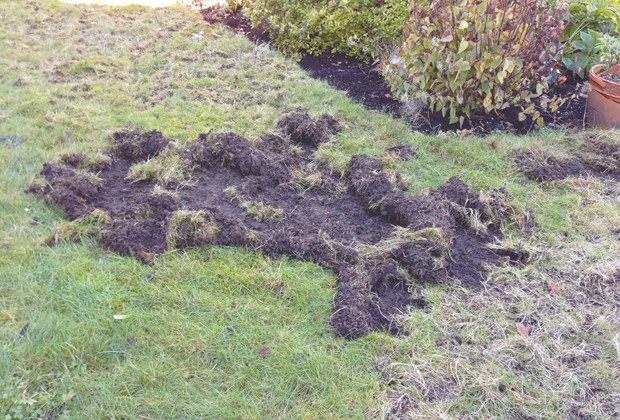Some gardening experiences are common to anyone who grows a garden.
In a recent batch of emails from the readers of Dig Deep, I noticed a prevalent problem in the garden.
Top among recent email questions was how to deal with chafer grubs in lawns. It seems chafer grubs in affected lawns are making tasty snacks for crows, raccoons, skunks, seagulls and other critters that tear up the lawn to eat the grubs. Chafer grubs will gradually move throughout the Lower Mainland wherever lawns are grown - it is an inevitability. But, as one reader told me, "I have removed lots of lawn and turned it into beds or walkways but I am not willing to get rid of the rest, at least not yet." This is a common sentiment of many Dig Deep readers.
So what is the best way to manage the problem of chafer attack in the lawn? The best advice I can offer is resistance or reduction. Infestations seem to occur more often in grass that is closely cut. The height of the grass may affect the ability of the adult chafer beetle to reach or not reach the lawn surface to lay eggs. Recent experience suggests that longer, fuller grass is better able to withstand chafer beetle egg laying and therefore infestation.
It is important to know that chemical fertilization keeps the lawn continually juvenile and growing soft tissue. Those conditions are favourable for chafer infestation because soft grass is easier to access and tastier to eat.
Some chafer resistance success has been demonstrated on lawns grown without the use of chemical fertilizer or herbicide. Organically grown lawns contain higher concentrations of beneficial soil organisms that may eat the developing chafer grub. And lawns grown with manure or compost generally grow harder tissue that is more robust and less susceptible to environmental stress or insect attack. Many readers asked about using nematodes for chafer control. Chemical companies have long been feeding us the ideology to treat the symptom (chafer grubs) with a product. Or as I like to call it, "Spray long and profit." The real solution is to treat the problem of too much grass region-wide with much of it being grown unnecessarily lush and soft. Spray nematodes if you want, follow the label and keep it up to see if the problem goes away. But nematode application and life cycle timing is critical and only occurs in late July or August.
Lawns that contain a diverse range of plants are also better at resisting chafer attack. To start with, grow a diverse lawn with more than one grass species. Diversity does mean growing other plants besides grass. But it does not mean we should all plant dandelions and clover in our lawns, as beautiful as that would be. Instead, a diverse lawn should contain some smaller, less aggressive plants such as ajuga reptans, low-height clovers or some purple speedwell or other compatible plants.
In short, the overly manicured, mono-cultured and short-cropped lawn is more likely to be infested versus a longer, more ecologically diverse and organically grown lawn.
When it comes to removal of chafer-affected lawns, you can replant a new lawn, replant with some other landscape element or consider artificial turf. Planting groundcovers to replace affected lawns is a good solution. There are many groundcovers to choose from and they are particularly well-suited to boulevard and roadside areas. There's always the option of replacing grass with walkways, patios, planting beds or other features.
Ultimately, if you must have a lawn and chafers are a problem in your area then artificial turf is the only long-term solution. I know there are people who are upset that I am supposedly organically minded and here I am recommending some plasticized version of a garden. I prefer alternatives to lawn but people want options. The modern artificial lawn made only for residential use, not for sport use, will last a long time, is low-maintenance and has a moderate environmental impact.
Would Todd install artificial turf in his yard? No, I would not. But I have installed it for some residential clients. I have almost no grass in my yard except a patch 10 feet square for my wife. There's more clover, ajuga reptans, forget-me-nots and other small plants growing in the lawn than there is grass.
We are back where we started: resist the chafer or replace its food source. And while the recent snowfall has quieted the attack of crows and critters searching for chafer grubs in the lawn, the peace is only temporary.
Hopefully the snow has also clarified the landscape, leaving impressions of beauty in the garden and decisions about the future of the lawn.
Todd Major is a journeyman horticulturist, garden designer and builder, teacher and organic advocate. [email protected]



